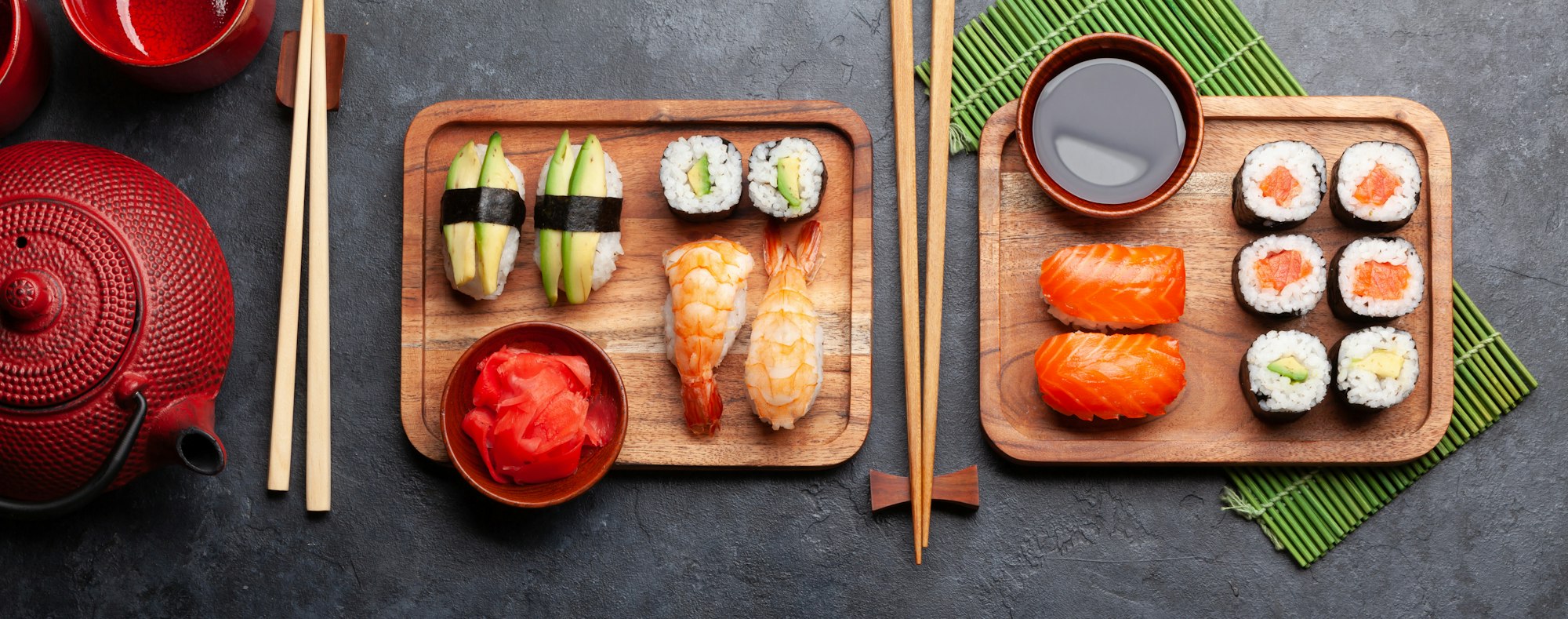What are the essential techniques for making sushi?

Sushi, a distinctive and delightful dish from Japan, is recognized worldwide for its unique blend of flavours and its delicate assembly. The art of sushi making involves a series of essential techniques which require practice and finesse. From selecting the right ingredients to the perfect roll, each step has its significance. This article aims to guide you on the path of mastering these techniques, providing a thorough understanding of the elements involved in making sushi.
Understanding the Ingredients
Before you can even begin to make sushi, it is crucial to familiarize yourself with the ingredients. The core components for making sushi include: rice, fish, nori (seaweed), and other fillings like avocado.
Lire également : How to master the art of korean bbq?
Sushi rice, known as shari in Japanese, is a particular short-grain rice variety that becomes sticky when cooked. It is combined with a mix of rice vinegar, sugar, and salt, giving sushi its identifiable tangy taste.
Fish, preferably fresh, is another essential ingredient. Typically, sushi utilizes raw fish such as tuna, salmon, or mackerel. However, cooked variants like shrimp and eel can also be used. The type of fish you select will significantly influence the sushi’s flavor and texture profile.
A lire également : The secrets to perfect fried chicken
Nori, a type of seaweed processed into thin sheets, is vital for making sushi rolls. It provides a slightly salty, oceanic flavor that beautifully complements the other ingredients.
Lastly, the fillings can vary based on personal preferences. A popular choice is avocado, but other options like cucumber, crab, or even cream cheese can be used.
Preparing the Rice
The preparation of sushi rice is critical to the final taste and texture of the sushi. Here’s a step-by-step breakdown of the process:
-
Rinsing: Rinse the rice under cold water until the water runs clear. This step removes any excess starch, ensuring the rice doesn’t become overly sticky.
-
Cooking: The rice is then cooked with water in a 1:1 ratio. Once the water boils, reduce the heat and let it simmer until all the water has been absorbed.
-
Seasoning: While the rice is still warm, add a mix of rice vinegar, sugar, and salt. Fold it gently into the rice, taking care not to crush the grains.
-
Cooling: Allow the rice to cool at room temperature before using it for sushi. The rice should be sticky to the touch but not overly wet.
Selecting and Preparing the Fish
The selection of fish for sushi must be done with care, considering freshness and quality. The fish should be firm, brightly colored, and have a fresh smell. If you’re using raw fish, ensure it’s sushi-grade to avoid any risk of foodborne illness.
Preparing the fish involves slicing it into thin strips. A sharp, thin-bladed knife should be used, and the fish should be cut against the grain for the best texture. The slices should be thin enough to be easily rolled but thick enough to offer a substantial bite.
Rolling the Sushi
The next step in sushi making is the process of rolling. A bamboo mat is used to shape and compress the sushi roll.
-
Laying out the nori: Place a sheet of nori on the bamboo mat. Wet your hands slightly to prevent the rice from sticking, then evenly spread a thin layer of rice on the nori, leaving about an inch at the top for sealing the roll.
-
Adding the fillings: Lay the fish and other fillings in a line along the middle of the rice.
-
Rolling: Lift the edge of the mat closest to you and roll it over the ingredients, pressing firmly. Continue rolling, keeping the roll tight with the mat until you reach the end of the nori sheet. Dab a bit of water on the exposed edge to seal the roll.
-
Cutting: Using a sharp knife, slice the roll into bite-sized pieces.
Perfecting your Technique
While the basic steps of sushi making may seem simple, mastering the art requires practice. From spreading the rice evenly to achieving the perfect roll, each aspect can be refined over time.
Learning how to balance flavors is another crucial skill. The combination of sweet, salty, sour, and umami should be harmonious, not overpowering.
Finally, presentation plays a significant role in the sushi experience. The sushi pieces should be neatly arranged, showcasing the beauty of the ingredients and the effort put into their creation.
As you embark on your sushi making journey, remember that patience and practice are your allies. With time, you’ll be able to perfect these techniques and enjoy the rewarding process of creating your own sushi masterpieces.
Enhancing your Homemade Sushi with Condiments and Garnishes
To elevate your homemade sushi experience, the addition of condiments and garnishes can’t be overlooked. These elements not only add an extra layer of flavor but also enhance the visual appeal of the dish.
Soy sauce, wasabi, and pickled ginger are the traditional condiments served with sushi. Soy sauce is a salty, umami-rich liquid that balances out the mild flavors of the sushi. It’s essential to use it sparingly to preserve the sushi’s original taste.
Wasabi is a spicy, pungent paste made from the wasabi plant. It’s typically served on the side and can be mixed with soy sauce or applied directly to the sushi for an extra kick. Be cautious with its usage, though, as it’s quite potent.
Pickled ginger, or gari, serves two purposes. It’s used as a palate cleanser between different types of sushi, and it also provides a sharp, sweet contrast to the sushi’s flavors.
As for garnishes, sesame seeds are often sprinkled over sushi rolls for added crunch and flavor. You can also use thinly sliced vegetables, herbs, or even edible flowers to add color and texture.
Remember, the goal is to enhance the sushi experience, not overpower it. The condiments and garnishes should complement the sushi roll, not distract from it.
Sushi Variations: Beyond the Basic Sushi Roll
Now that you’re familiar with the basics of making sushi, you may want to explore other styles of sushi such as Nigiri and Sashimi.
Nigiri sushi is a type of sushi where a thin slice of raw fish is pressed atop a small ball of sushi rice. Unlike sushi rolls, nigiri is usually made by hand without the use of a bamboo mat. It highlights the quality of the sushi-grade fish and offers a different texture experience.
Sashimi, on the other hand, is not technically sushi since it doesn’t involve rice. It comprises thin slices of raw fish served alone or with a dipping sauce. Sashimi allows you to fully appreciate the flavor and texture of high-grade fish.
Exploring these variations can deepen your sushi making skills and expand your culinary repertoire. Don’t be afraid to experiment and create your own unique sushi creations.
Conclusion: Embrace the Art of Sushi Making
Mastering the art of sushi making requires time, patience, and a genuine love for the craft. From understanding the ingredients to perfecting the rolling technique, each step is a crucial part of the process.
Remember to keep your sushi rice at the right consistency, select your raw fish carefully, and roll your sushi firmly using a bamboo mat. Don’t forget to enhance your sushi rolls with a balance of condiments and garnishes like soy sauce, wasabi, pickled ginger, and sesame seeds.
Whether you’re making a basic sushi roll or venturing into nigiri sushi or sashimi, enjoy the process. Savor the combination of flavors and textures in each bite, and take pride in your homemade sushi creations.
With practice and creativity, you’ll soon be creating sushi that’s not just tasty, but also a feast for the eyes. After all, sushi isn’t just food – it’s an art form that celebrates the beauty and diversity of its ingredients.
